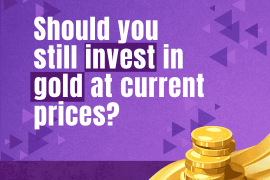One of my friends recently invested 100% in equity, targeting annualized returns of 18-20% over 10 years. Is it possible?
I told him straightaway that the possibility of achieving these returns is extremely low when you are investing in an expensive market. Past data indicate that any investment made in expensive markets (PE > 22x) has generated low single-digit returns at best over the next 10 years.
Even if you invest in small/mid-caps, the probability falls further since the valuations are crazier in the small/mid-cap space. Valuations play a major role in determining future returns.
However, high teen returns are still possible if you use a dynamic asset allocation framework and value investing principles (assuming GDP growth remains intact).
Through dynamic asset allocation, right asset calls can make a significant difference in portfolio returns.
For example, the last year’s returns for Nifty50 are zero. However, my portfolio returns are 12%. This 12% alpha over the benchmark was achieved by only 50% exposure to the equity asset class. Rest 15% in Gold and the remaining in debt/arbitrage funds.
The majority of gains came from Gold, and after that, from the right equity fund selection in large value portfolios that also included 7-8% exposure to China-oriented funds, which also delivered very well.
In an expensive or rangebound market, selecting the right value opportunities can deliver decent returns over the benchmark.
The allocation in the aggressive risk portfolio at 50% currently is due to higher market levels. This equity exposure changes dynamically from as low as 35% to as high as 100% depending upon the market valuations compared to long-term averages.
Thus, there is a much higher probability of achieving consistently handsome returns with a low level of risk through a dynamic asset allocation framework backed by value investing principles.
Buy and hold works if you intend to generate average market returns, which could be even less than FD rates over the long term if investments are made in an expensive market.
Portfolio needs dynamic asset allocation, of course, by keeping taxation into account, to outperform the market and manage volatility suitable to your risk appetite.
Originally posted on LinkedIn: www.linkedin.com/sumitduseja





